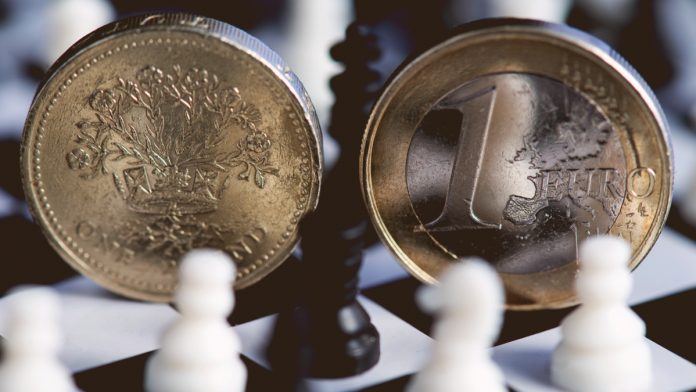- Pound (GBP) claws higher despite rising covid cases
- Brexit uncertainty rises as deadline looms
- Euro (EUR) out of favour as France sees covid cases surge and Paris heads back into lockdown
- Recent data highlights shaky recovery
The Pound Euro (GBP/EUR) exchange rate is climbing higher on Thursday, snapping a two say losing streak. The pair settled -0.35% lower in the previous session at €1.0975, off the low of €1.0956 but still some distance from the high of €1.1039. At 05:15 UTC, GBP/EUR trades +0.1% at €1.0990
Pound traders are shrugging off the rising number of covid infections in the UK. Boris Johnson is reportedly drawing up plans for tougher lockdown restrictions on pubs across the north of England as the Finance ministry finalises additional stimulus to support the hospitality sector. These new restrictions could be in place by Monday
Whilst the UK economic recovery has been steady so far, the tightening of lockdown restrictions could quickly derail the fragile recovery.
Brexit uncertainty refuses to die down. Boris Johnson has said that he wants to see a clear outline for a trade deal by 15th October, or the UK will pull out of negotiations. An EU diplomat said that the EU has no plans to offer a concession in order to meet Boris Johnson’s deadline. Talks will continue for now and headlines will drive the Pound.
BoE Governor Andrew Bailey is also due to speak later today.
The Euro was broadly out of favour, albeit flat versus the weak Pound amid rising coronavirus cases on the old continent. Both France and Spain posted a record number of covid cases raising fears that the governments have lost control of the spread of the virus.
New infections in France jumped 18,746 over the past 24 hours. French President Macron has ordered Paris to close for two weeks. This could lead to another deep contraction in the French economy.
On the economic calendar, German industrial production fell well short of expectations -0.2% month on month. Analysts had expected a +1.5% increase. The data comes after factory orders smashed forecasts jumping 4.4% showing just how shaky the recovery is.





